On this page is a list of animals that live in the desert, with pictures and facts on each species. We've selected desert animals from all over the world, and because many of these species are threatened, we've included their conservation status according to the IUCN (International Union for Conservation of Nature).
Desert Animals
Examples of desert animals include invertebrates such as scorpions and camel spiders; reptiles such as the thorny devil, Gila monster and sidewinder rattlesnake; mammals such as the fennec fox, meerkat, dromedary and Bactrian camel; and birds such as the sandgrouse and lappet-faced vulture.
Introduction To Deserts & Animals That Live In Deserts
(Click here or scroll down to go directly to the animals!)
Deserts are regions in which very little rain falls. Because living things need water to survive, deserts are home to relatively few plants and animals (especially when compared to habitats such as rainforests, jungles and oceans).
Although deserts are known for being extremely hot during the day, they can also get very cold at night (because there are no clouds to prevent a desert's heat from escaping into space).
With very little water, and therefore very little food (plants can't grow without water) – not to mention those extreme temperatures, life in the desert isn't easy.
Many animals that live in the desert have special adaptations to help them survive in this inhospitable environment.
Desert Animal Adaptations
Desert animal adaptations include: large ears for dissipating body heat; a light-colored coat to reflect heat; hairy paws for walking on hot sand; the ability either to store water or to survive on very little water; being nocturnal; and living in a burrow.
Cold Deserts
Not all deserts are hot. Because both the Arctic and Antarctica have very little rain (or snow) they’re also considered to be deserts.
These polar regions are known as ‘cold deserts’. You can find out about the animals that live in cold deserts on these pages: Arctic Animals and Antarctic Animals.
Hot Deserts
The animals in the list below all live in ‘hot deserts’ such as the Sahara Desert and Kalahari Desert in Africa, the Sonoran Desert and Mojave Desert in North America, the Great Victoria Desert in Australia, and the Arabian Desert in the Middle East.
- You can see a list of desert plants here: Desert Plants with Pictures and Facts
- Discover more about deserts on this page: The Desert Biome Facts
- Explore famous deserts from all around the world: Deserts Of The World With Facts & Pictures
- Find out more about the deserts of North America: North American Deserts
Free Desert Animals Worksheet To Download & Print
Test your knowledge of desert animals with this free printable question sheet! (No sign-up required; simply download and print.)
Click here to get your free desert animals question sheet. (Question sheet comes as a printable pdf file.)
For more details, and a selection of other question sheets, see this page: Free Printable Worksheets.
Desert Animals List
A to Z list of desert animals with pictures and facts about each species. Links to further information are provided for many of the animals.
Addax
- Scientific name: Addax nasomaculatus
- Type of animal: Mammal, Even-toed ungulate
- Where found: Sahara Desert
- Conservation status: Critically endangered
The addax is a critically endangered species of antelope found in the Sahara Desert. The species is also known as both the "white antelope" and the "screwhorn antelope" due to its pale coat and long, spiral horns.
The main threat to the addax is poaching. Habitat loss has also played a part in the species’ Critically Endangered status, with much of the addax’s traditional territory having being converted into farmland.
There may be fewer than 90 adult addax left in the wild; perhaps as few as 30. This desert animal may soon be extinct in the wild.
Antelope Jackrabbit
- Scientific name: Lepus alleni
- Type of animal: Mammal, family Leporidae (the rabbit and hare family)
- Where found: Sonoran Desert, Arizona & Northern Mexico
- Conservation status: Least Concern
The antelope jackrabbit is a hare found in deserts and other dry habitats in the south western United States. It is one of the largest North American hares.
The species can be identified by its large size, very long, pointed ears, white / gray sides, white underparts, buff neck and chest, and black / buff back.
The diet of this herbivorous mammal includes cacti and mesquite leaves. (Mesquite is a small tree that grows in deserts and other dry habitats.)
Arabian Oryx / White Oryx
- Scientific name: Oryx leucoryx
- Type of animal: Mammal, Even-toed ungulate
- Where found: Arabian Desert
- Conservation status: Vulnerable
The Arabian oryx is the smallest of the four antelopes in the genus oryx. It stands 1m tall at the shoulders, and its long, straight horns are almost as tall again, reaching 75 cm in length.
The Arabian oryx became extinct in the wild in the early 1970’s. A reintroduction program that began in the 1990’s saw captive animals being released back into the wild. Today there are around 850 Arabian oryxes living in the wild.
The biggest threat to the species is illegal hunting.
Arabian Sand Gazelle / Reem
- Scientific name: Gazella marica
- Type of animal: Mammal, Even-toed ungulate
- Where found: Syrian Desert, Arabian Desert
- Conservation status: Vulnerable
The Arabian sand gazelle (also known as a ‘reem’) is a small antelope. The ends of its horns curve inwards.
A desert specialist, the Arabian sand gazelle was once found throughout the Arabian Peninsula. Today most of the population resides in protected areas.
The species is currently rated Vulnerable by the IUCN (the International Union for Conservation of Nature). The main threats to the species are illegal hunting and habitat loss.
Camel Spiders
- Type of animal: Arachnids, order Solifugae
- Where found: Syrian Desert
Camel spiders are arachnids in the order Solifugae. (An order is a group of related animals.) Camel spiders are also known as wind scorpions, sun spiders and solifuges.
Many camel spiders can be identified by their large, powerful mouth parts. All camel spiders have four pairs of legs and a pair of additional, leg-like structures called ‘predipalps’, which are used for sensing and feeding.
Unlike their fellow arachnids the spiders, camel spiders are unable to produce silk, and do not spin webs.
There are over 1,000 species of camel spider. They range in size from a few millimeters to 15 cm (6 in.) in length (including legs). Most camel spiders are desert animals, although some are found in grasslands and forests.
- You can find out more about camel spiders here: Camel Spider Facts
Deathstalker Scorpion
- Scientific name: Leiurus quinquestriatus
- Type of animal: Arachnid, scorpion
- Where found: Sahara Desert, Arabian Desert
- Conservation status: n/a
The deathstalker is one desert animal you probably don’t want to encounter. Its venom is among the most powerful of all scorpions. A sting from this fearsome arachnid is extremely painful and potentially fatal.
The deathstalker inhabits desert and scrubland habitat in North Africa and Western Asia. It is around 2.36 in / 6 cm in length, and appears in a variety of colors and markings, making it hard to identify.
The deathstalker isn’t all bad news; its venom can be used to locate tumors in the human body.
- You can find out more about scorpions here: Scorpion Facts
Desert Iguana
- Scientific name: Dipsosaurus dorsalis
- Type of animal: Reptile, order Squamata
- Where found: Sonoran Desert, Mojave Desert
- Conservation status: Least Concern
The desert iguana is found in the southwestern USA and northern Mexico. It is one of the most commonly encountered lizards in the deserts in this region.
The species grows to around 24 in. (60 cm) in length including the tail, which is around 1 ½ times the length of the body. Its base color is grey / light brown, with darker lines running along its back, and dark rings on its tail.
The desert iguana is active during the day even in high temperatures. If disturbed, it will quickly retreat into a burrow or other shelter.
Dromedary
- Scientific name: Camelus dromedarius
- Type of animal: Mammal, order Artiodactyla (the even-toed ungulates)
- Where found: Sahara Desert
- Conservation status: Domestic animal
Camels are among the most famous of all desert animals. These hoofed mammals are a common sight in many desert regions, where they were domesticated around 4,000 years ago. Camels are used for transport, food and clothing.
There are three camel species: the single-humped dromedary, and the two-humped Bactrian and Wild Bactrian. They make up the genus Camelus.
The dromedary is by far the most abundant camel, representing 94% of all camels. Today it is a domestic animal, most often seen in desert regions. Australia has a small feral dromedary population made up of the descendants of animals introduced to the country by humans.
The dromedary has many adaptations for living in the desert. These include bushy eyebrows, double-layered eyelashes, and nostrils that can close up completely, all of which provide protection from sand storms.
The dromedary is able to go long periods of time without drinking. It stores both water and energy – in the form of body fat – in its hump.
Fennec Fox
- Scientific name: Vulpes zerda
- Type of animal: Mammal, order Carnivora
- Where found: Sahara Desert
- Conservation status: Least Concern
The fennec fox is a mammal found in North Africa and the Middle East. It is the smallest member of the dog family Canidae, with a maximum body length of around 16 in. (41 cm).
The fennec fox is known for its distinctive long ears, which are up to 15 cm (almost 6 in.) in length.
The fox’s ears serve a dual purpose: not only do they provide extra-sensitive hearing (useful for locating prey that is underground), but they also help to keep the fox cool. Blood vessels close to the skin in the ears dissipate body heat into the air.
A thick layer of fur on the fennec fox’s paws provide grip and protection from the hot sand.
The fennec fox has a thick, pale orange coat. This keeps the fox warm at night, when temperatures in the Sahara Desert can be surprisingly low, even (occasionally) dropping below 0 °C.
- You can find out more about this animal here: Fennec Fox Facts
Greater Flamingo
- Scientific name: Phoenicopterus roseus
- Type of animal: Bird, family Phoenicopteridae
- Where found: Kalahari Desert
- Conservation status: Least Concern
The greater flamingo is the largest of the six species of flamingo, and one of only two found outside of the Americas.
This large, pale pink bird is found in shallow lakes, lagoons and estuaries in Africa, Asia and Europe.
Although not exclusively a desert animal, the greater flamingo does visit shallow lakes and flood plains in desert regions.
Each year, many thousands of greater flamingos visit the Makgadikgadi Pan of north eastern Botswana in order to breed. The shallow, highly salty waters of the Makgadikgadi Pan are surrounded by the Kalahari Desert.
- You can find out more about this species here: Greater Flamingo Facts
Gila Monster
- Scientific name: Heloderma suspectum
- Type of animal: Reptile, order Squamata
- Where found: Sonoran Desert
- Conservation status: Near Threatened
The Gila monster is a lizard found in a range of dry habitats throughout the southwestern United States and Northern Mexico. It is a relatively large, slow-moving lizard. It has rounded, bead-like scales and a blotchy black / orange-pink coloration.
The Gila monster is one of only two venomous lizards found in the Americas (the other is the closely related Mexican beaded lizard).
The danger posed by these desert animals is often exaggerated. Although a bite from a Gila monster is painful, to most healthy humans it isn’t life-threatening.
- You can find out more about the Gila monster here: Gila Monster Facts
Golden Hamster
- Scientific name: Mesocricetus auratus
- Type of animal: Mammal, order Rodentia (rodent)
- Where found: Syrian Desert
- Conservation status: Vulnerable
The golden hamster is a rodent found in the wild in Syria and Turkey (the animal is also known as the Syrian hamster).
Although a popular pet in many parts of the world, the wild population of golden hamsters is decreasing, and the species’ conservation status is Vulnerable.
Golden hamsters are territorial, and do not tolerate other hamsters in their territories. Hamsters are able to carry large amounts of food in the cheek pouches – useful if they come across more food than they are able to eat in one sitting.
Jerboas
- Type of animal: Mammal, order Rodentia (rodent), family Dipodidae
- Where found: Gobi Desert
Jerboas are a group of rodents within the family Dipodidae. They are found in deserts and other arid habitats in Northern Africa, Asia and Australia.
Jerboas move by hopping, in a similar way to kangaroos. They have long, powerful hind legs and short fore limbs. A long tail helps the jerboa to keep its balance when hopping or standing upright. Some jerboas can hop more than ten times their own body length!
Jerboas have several adaptations for living in the desert. These include a sandy colored coat that provides camouflage, and a burrowing lifestyle. They are active either at twilight or at night, thereby avoiding the hottest hours of the day.
Kit Fox
- Scientific name: Vulpes macrotis
- Type of animal: Mammal, order Carnivora
- Where found: Sonoran Desert
- Conservation status: Least Concern
The kit fox is a small canid (member of the dog family) found in the Southwestern United States and northern Mexico. It inhabits deserts and other dry habitats, such as scrublands and grasslands.
The species is known for its large ears, which provide both excellent hearing and a means of reducing body heat. Heat is dissipated by blood vessels in the ears.
Another adaptation for life in the desert is dense hair on the soles of the feet. This provides traction on slippery sand, and also protection from the heat.
Kit foxes rarely drink. Instead they get most of the water they require from their almost completely carnivorous diet.
A nocturnal, burrowing lifestyle helps them avoid the highest desert temperatures.
- You can find out more about this desert species on this page: Kit Fox Facts
Lappet-Faced Vulture
- Scientific name: Torgos tracheliotos
- Type of animal: Bird, order Accipitriformes
- Where found: Desert areas of Africa and the Middle East
- Conservation status: Endangered
Like most vultures it is primarily a scavenger, although the lappet-faced vulture is also thought to hunt live prey on occasion.
As one of the biggest and strongest vultures, the lappet-faced vulture will prevent other vultures from feeding on carrion it has found. It has also been known to stand its ground against a jackal!
Using its huge bill, the vulture can tear apart even tough skin, tendons and bone. It is a ‘living tin-opener’, making carrion accessible for smaller vultures and other scavengers who can’t break through the tough hides.
Meerkat
- Scientific name: Suricata suricatta
- Type of animal: Mammal, order Carnivora
- Where found: Kalahari Desert, Namib Desert
- Conservation status: Least Concern
The meerkat is a mammal in the mongoose family Herpestidae. It is found in desert and other dry habitats, including savannah and grassland. It is known for its highly social behavior and distinctive upright stance.
This characterful desert animal lives in groups that can contain up to 50 individuals. The group is active during the day, and spends the nights in large burrows.
Members of a group will often groom each other before heading off to forage. Sentries survey the landscape for threats, and will alert the group using different alarm calls depending on the threat.
- You can find out more about meerkats on this page: Meerkat Facts
Mojave Desert Tortoise
- Scientific name: Gopherus agassizii
- Type of animal: Reptile, order Testudines
- Where found: Mojave Desert
- Conservation status: Critically Endangered
As its name suggests, the Mojave Desert tortoise is found in North America's Mojave Desert. Until 2011 it had been considered to be the same species as the Sonoran desert tortoise, Gopherus morafkai. Prior to then both species had been known as the "desert tortoise".
The Mojave Desert tortoise is present to the north and west of the Colorado River in California, Nevada, Utah and Arizona. This shy reptile is rarely encountered; it spends up to 95% of the time in burrows, or hidden in rock shelters.
The Mojave Desert tortoise digs its own burrows, and will hibernate underground during the winter.
A 2020 study, whose results were published in 2021, found the species to be Critically Endangered. This is due mainly to habitat loss.
- You can find out more about the Mojave desert tortoise here: Mojave Desert Tortoise Facts
Mulgara
- Scientific name: Brush-tailed mulgara: Dasycercus blythi; Crest-tailed mulgara: Dasycercus cristicauda
- Type of animal: Mammal, marsupial
- Where found: Great Sandy Desert
- Conservation status: Brush-tailed mulgara: Least Concern; Crest-tailed mulgara: Vulnerable
Mulgaras are rat-sized marsupials found in desert regions of central Australia. There are two species of mulgara: the brush-tailed mulgara and the crest-tailed mulgara. The crest-tailed mulgara has a crest-like ridge of longer hairs on its tail.
Mulgaras are in the same family, Dasyuridae, as the Tasmanian devil and the quolls.
Both mulgaras are carnivorous, feeding mainly on small reptiles, insects and rodents. They conserve energy by periodically entering torpor – a state of reduced activity that resembles a ‘mini-hibernation’.
These Australian desert animals rarely drink, and their kidneys are specially adapted to preserve water.
Namib Desert Beetle / Fogstand Beetle
- Scientific name: Stenocara gracilipes
- Type of animal: Insect, order Coleoptera (beetles)
- Where found: Namib Desert
- Conservation status: Unassessed
The fogstand beetle is an insect found in the Namib Desert, a coastal desert in southern Africa.
Using its specially-adapted wing-cases, the beetle can collect minute droplets of water from the early morning fog. The tiny droplets build up until the water runs down the beetle’s back and into its mouth.
This is a useful skill to have in a region that receives only 1.4 cm (0.55 in.) per year!
This desert insect’s water collecting abilities haven’t gone unnoticed; inventors are working on materials and products that utilize similar methods to collect water from the air!
Onager
- Scientific name: Equus hemionus
- Type of animal: Mammal, order Perissodactyla (Odd-toed ungulates)
- Where found: Gobi Desert, other dry habitats in Asia
- Conservation status: Near Threatened (two subspecies are Endangered)
Also known as the Asiatic wild ass, the onager is a hoofed mammal in the horse family Equidae. The species is found in Asia, where it inhabits deserts (including the Gobi desert) and other dry, open habitats.
The species has four living subspecies: the Mongolian wild ass, Turkmenian kulan, Persian onager and Indian wild ass. Each is found in a different part of Asia. Both the Turkmenian kulan and Persian onager are rated Endangered.
The onager is one of the world’s fastest mammals. It is capable of reaching speeds of up to 70 km/h / 43 mph.
Red-Spotted Toad
- Scientific name: Anaxyrus punctatus
- Type of animal: Amphibian, order Anura (frogs and toads)
- Where found: Mojave Desert
- Conservation status: Least Concern
This small toad is found in deserts and other dry habitats in the southwestern United States and northern Mexico. It reaches lengths of around 3 inches (7.6cm), and has pale olive green skin marked with black patches and smaller red spots.
The red-spotted toad spends much of its time sheltering from the sun in rocky crevices near streams. It is most often seen during periods of rainfall, when it emerges from its hiding place.
Roadrunner (Greater)
- Scientific name: Geococcyx californianus
- Type of animal: Bird, family Cuculidae
- Where found: Desert regions of the United States & Mexico
- Conservation status: Least Concern
The greater roadrunner is one of two species of roadrunner, the other being the lesser roadrunner (Geococcyx velox), which is found in Mexico and Central America. The two roadrunners are the only living members of the genus Geococcyx, which is part of the cuckoo family, Cuculidae.
Although roadrunners can fly, they only do so as a last resort when evading predators – they spend most of the time on the ground, and are excellent runners.
The greater roadrunner can run at speeds of up to 26 mph (41.8 km/h) – faster than any other non-flightless bird (even record-breaking sprinter Usain Bolt can only reach this speed for a few seconds in a race).
Saharan Silver Ant
- Scientific name: Cataglyphis bombycina
- Type of animal: Insect, family Formicidae (the ant family)
- Where found: Sahara Desert
- Conservation status: Unassessed
The Saharan silver ant has other adaptations for living in the desert: its long legs keep its body away from the hot sand, and it often walks using just four of its six legs, thereby minimizing the area in contact with the sand.
These adaptations are vitally important because the Saharan silver ant only emerges from its nest for around 10 minutes per day. The timing is crucial: it has to be hot enough so that ant-eating lizards are forced to seek shelter.
Sand Cat / Sand Dune Cat
- Scientific name: Felis margarita
- Type of animal: Mammal, order Carnivora, family Felidae (the cat family)
- Where found: Sahara Desert, Arabian Desert
- Conservation status: Least Concern
The sand cat is a rarely-seen desert cat found in northern Africa and the Middle East. It is smaller than a domestic cat, and has pale, sandy-colored hair, which is often marked with darker spots or stripes.
A layer of thick fur on the sand cat’s paws provides protection from the hot desert sand.
The sand cat has large, pointed ears, and is thought to have hearing that is far more acute than that of a domestic cat.
The sand cat is usually either nocturnal or crepuscular (active at dawn or dusk). It is only active during the day in the coolest months of the year.
- You can find out more about sand cats on this page: Sand Cat Facts
Sandgrouse
- Type of animal: Birds in the family Pteroclidae
- Where found: Desert regions of Africa & Asia
Sandgrouses are birds in the family Pteroclidae. Most of the 16 members of this family are found either in deserts or other dry habitats.
These medium-sized, ground-dwelling birds are seed-eaters. Sandgrouses often congregate in large numbers around waterholes then disperse to forage for seeds either alone or in smaller groups.
The Namaqua sandgrouse (pictured above) is found in Southern Africa, including the Kalahari Desert and the Namib Desert.
Sidewinder
- Scientific name: Crotalus cerastes
- Type of animal: Reptile, order Squamata
- Where found: Mojave Desert & other regions of SW United States and NW Mexico
- Conservation status: Least Concern
The sidewinder is a species of rattlesnake that inhabits desert regions in California, Nevada, Utah and Arizona. It is also found in northern Mexico.
The species’ name comes from the way in which it moves; by anchoring its tail and pushing its head forwards, then pulling its tail forwards and repeating the process, it can move at high speeds over sand. Although the snake’s head points in the direction of travel, its body appears to be moving sideways.
This way of moving is also used by other desert snakes, and is known as sidewinding.
The sidewinder is also known as the horned rattlesnake due to the horn-like scales that project out from above its eyes.
The sidewinder is venomous. Its bite is extremely painful, but rarely life-threatening. The sidewinder’s venom is relatively weak compared to that of most other rattlesnakes.
- You can find out more about this species here: Sidewinder Facts
Southern Marsupial Mole
- Scientific name: Notoryctes typhlops
- Type of animal: Mammal, marsupial
- Where found: Great Victorian Desert
- Conservation status: Least Concern
Convergent evolution occurs when different types of animal develop similar characteristics or abilities due to their having the same type of lifestyle.
The marsupial mole, an Australian desert animal, is an example of convergent evolution. It looks and behaves very much like a true mole, but as a marsupial is only very distantly related to the animals from which it gets its name.
This rat-sized desert marsupial lives in the hot, dry regions of inner Australia. It lives underground in tunnels, where it hunts earthworms and other invertebrates. The marsupial mole is blind, and probably uses a well-developed sense of smell to find its food.
Tarantula Hawk Wasp
- Scientific name: Pepsis grossa / Pepsis formosa (and other members of genera Pepsis and Hemipepsis)
- Type of animal: Insect in the family Pompilidae (the spider wasp family)
- Where found: Mojave Desert
- Conservation status: unassessed
Tarantula hawk wasps are large wasps of genus Pepsis.
One of the best known species of tarantula hawk wasp is Pepsis grossa. Its sting is said to be the second most painful in the insect world, after that of the infamous bullet ant.
The tarantula hawk’s sting scores pain level 4 – the highest score – on the Schmidt sting pain index, a scale for rating insect stings. Although excruciatingly painful, the sting is short-lived and non-fatal to humans.
Pepsis grossa is found in the southern United States and Mexico. It uses its powerful sting to hunt tarantula spiders.
The tarantula hawk wasp is the state insect of New Mexico.
Thorny Devil
- Scientific name: Moloch horridus
- Type of animal: Reptile, order Squamata
- Where found: Great Victorian Desert
- Conservation status: Least Concern
The thorny devil is a small lizard found in dry regions throughout most of central and west Australia. Its body and limbs are covered in rows of spines. Behind its head is a ‘decoy head’; a fleshy growth with two large horns. This is displayed to deter potential predators.
Tiny grooves in the thorny devils’ skin transport water directly to its mouth. Using this adaptation, the lizard can drink from the dew that forms on its body overnight.
- You can find out more about the thorny devil here: Thorny Devil Facts
Water-Holding Frog
- Scientific name: Cyclorana platycephala
- Type of animal: Amphibian, order Anura (frogs and toads)
- Where found: Great Victorian Desert
- Conservation status: Least Concern
Although a member of the family Hylidae (the tree frog family), the water-holding frog lives on the ground.
In fact, the species spends much of its life buried up to 1 meter (3.28 ft.) underground, wrapped in a cocoon. It only emerges after a period of heavy rain, when it makes its way to a swamp or waterhole in order to breed.
During dry periods the water-holding frog is able to aestivate. Aestivation is a state similar to hibernation, in which the frog becomes inactive in order to conserve energy.
The water-holding frog is so-named because it stores water in its bladder when buried. Australian aborigines used to dig the frogs up as a source of water.
Wild Bactrian Camel
- Scientific name: Camelus ferus
- Type of animal: Mammal, Even-toed ungulate
- Where found: Gobi Desert
- Conservation status: Critically Endangered
The wild Bactrian camel is a critically endangered desert animal. It is closely related to the Bactrian camel, a domesticated species.
Both Bactrian camels have two humps, but those of the wild Bactrian are smaller. The species is also slightly smaller in overall size than its domestic relative.
The wild Bactrian camel is said to be able to tolerate water even saltier than seawater.
Only around 950 wild Bactrian camels remain in the wild. Around 600 live in the Lop Nur Wild Camel National Nature Reserve in China. Around 350 live in the Great Gobi A Strictly Protected Area in Mongolia. Their numbers are decreasing.
- You can find out more about the wild Bactrian camel here: Wild Bactrian Camel Facts
Desert Animals For Kids: Conclusion
We hope that you have enjoyed meeting these desert animals. What is your favorite desert species? Have you seen any of these animals in the wild? Are there any other desert animals you think should be on this list?
Let us know in the comments below; we’d love to hear your views!
Discover Amazing Animals That Live In Other habitats...
- Rainforest Animals List with Pictures & Facts
- Arctic Animals List with Pictures & Facts
- Antarctic Animals List with Pictures & Facts
- Ocean Animals List with Pictures & Facts
- Australian Animals List with Pictures & Facts
- African Animals List with Pictures & Facts
Become an Animal Expert with Active Wild...
Visit these pages to learn more about animals and the animal kingdom:

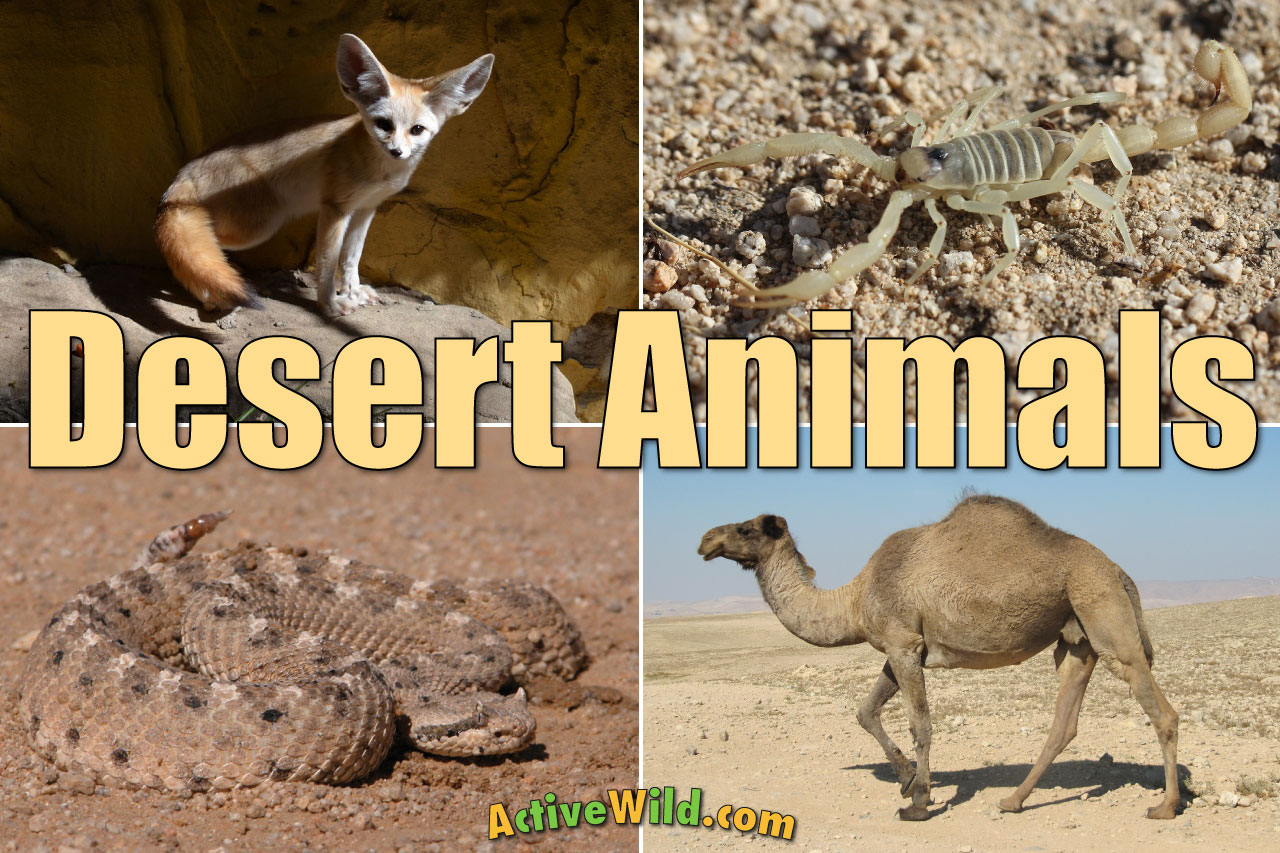

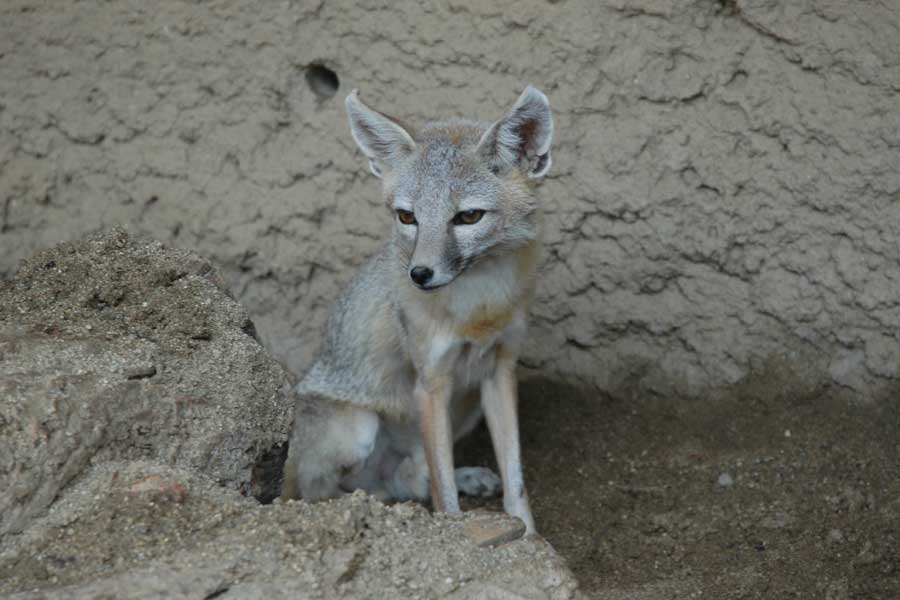

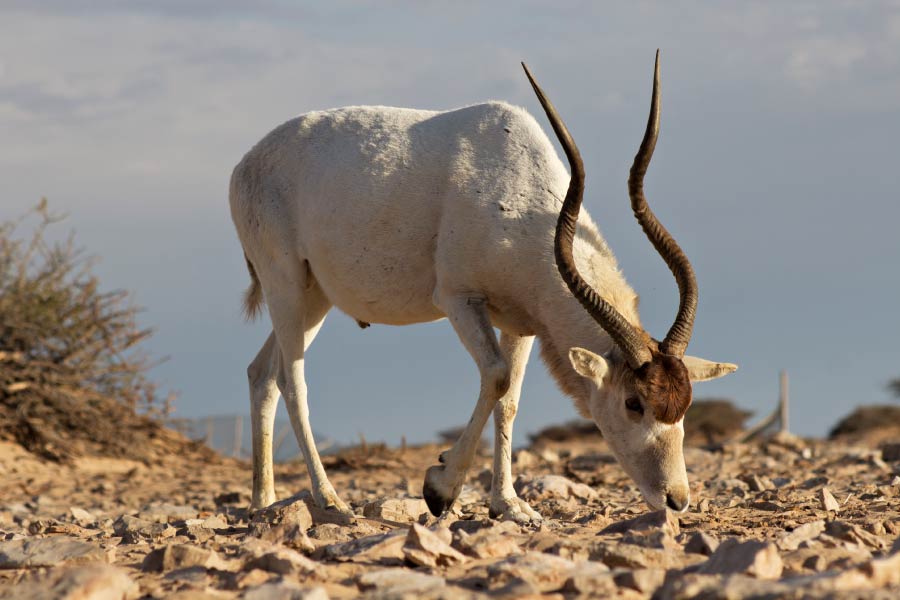
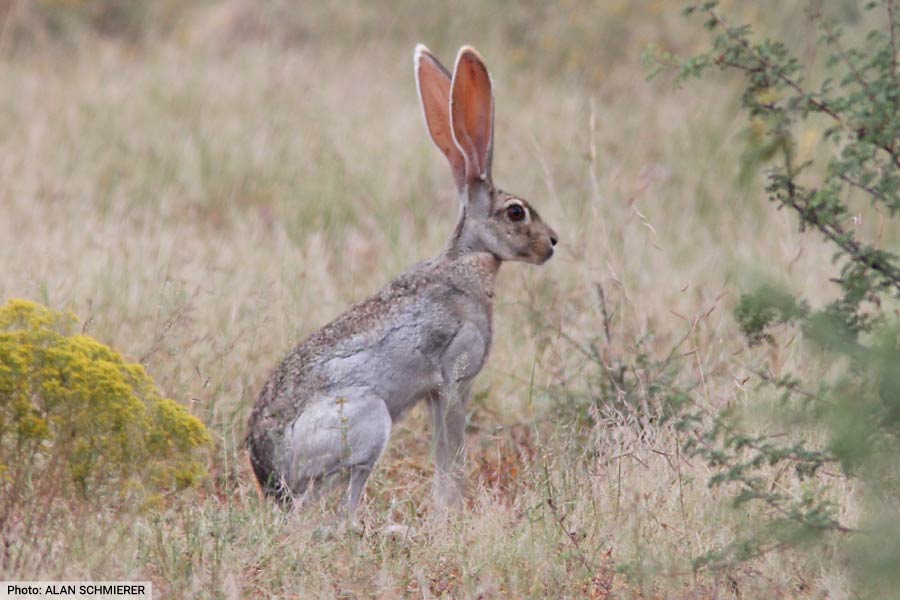



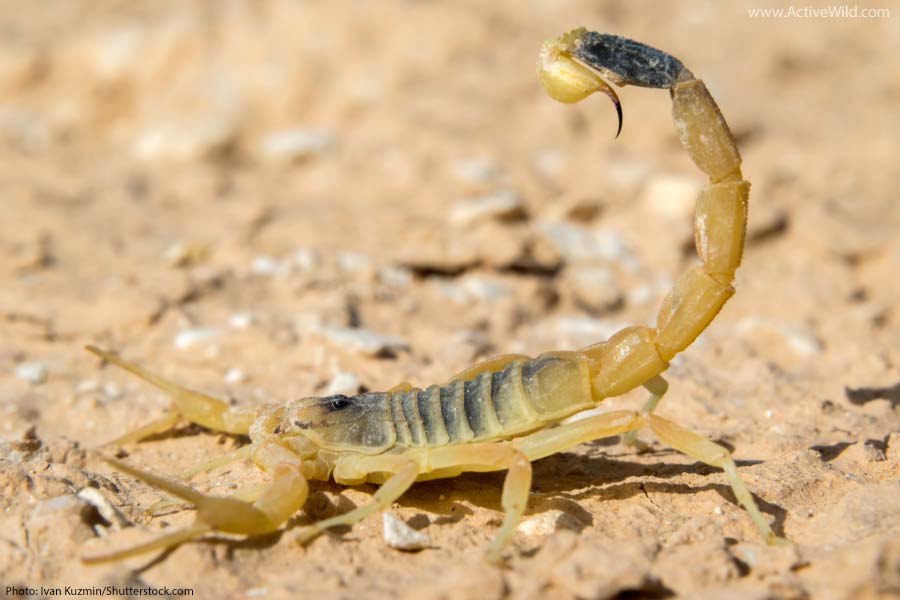

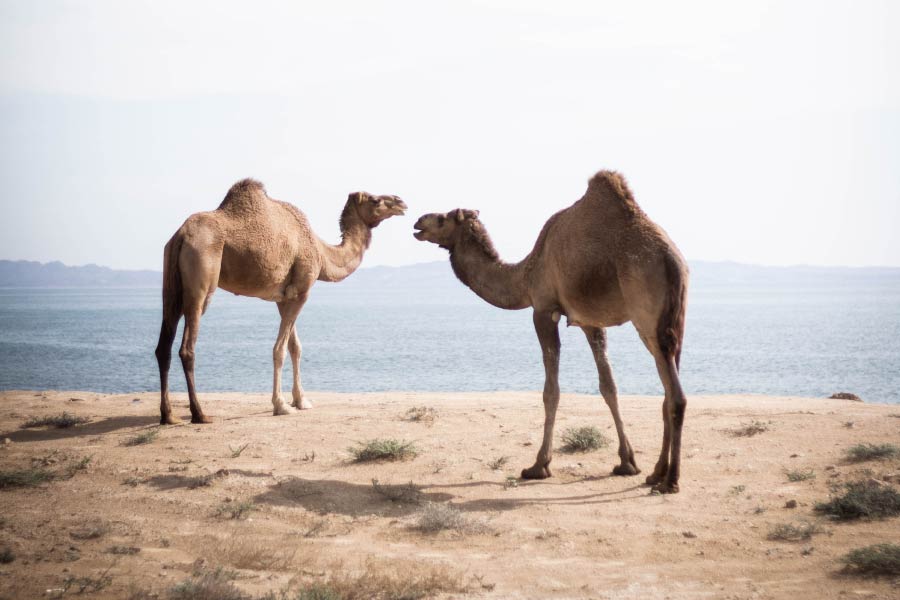

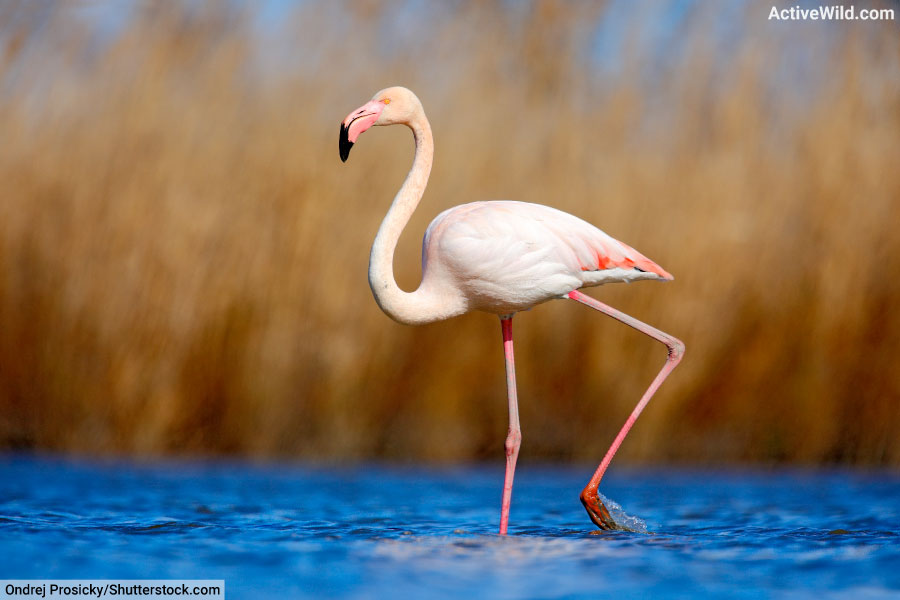
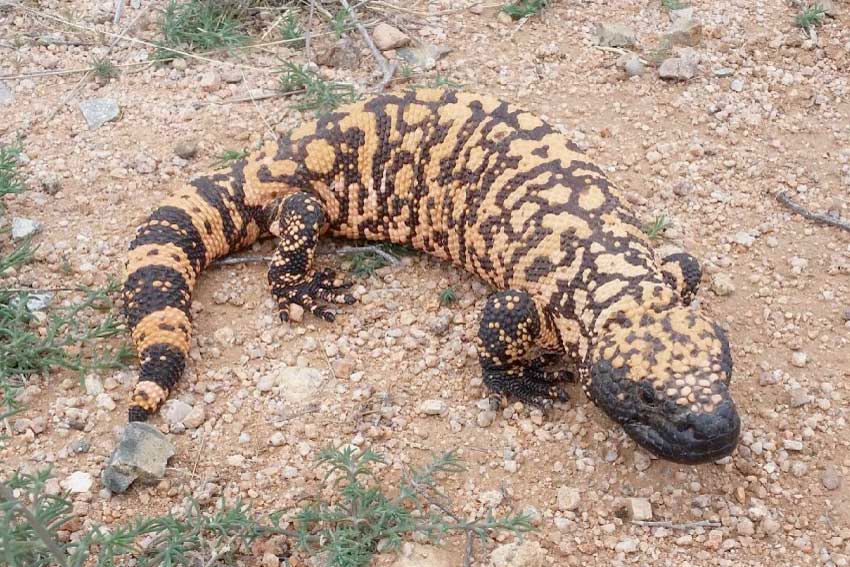


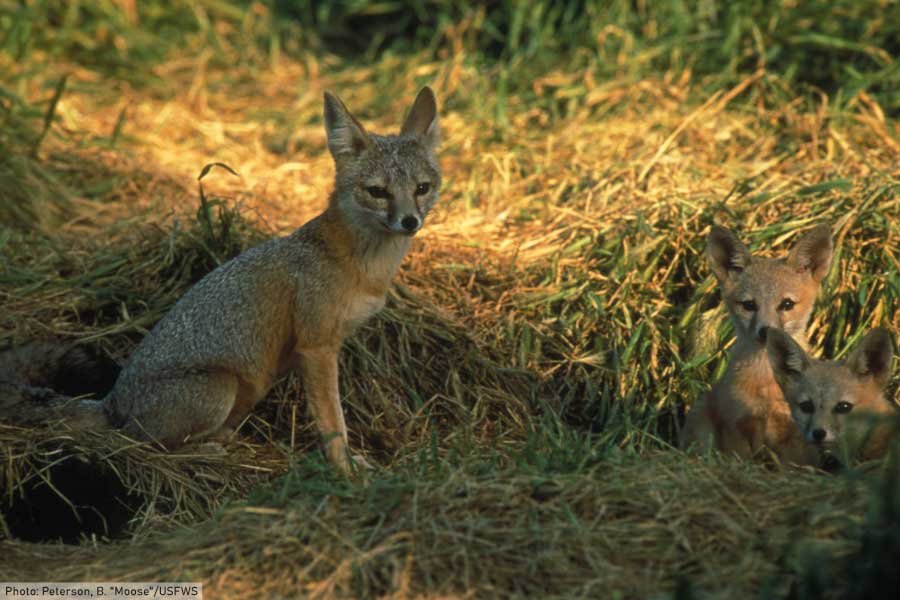
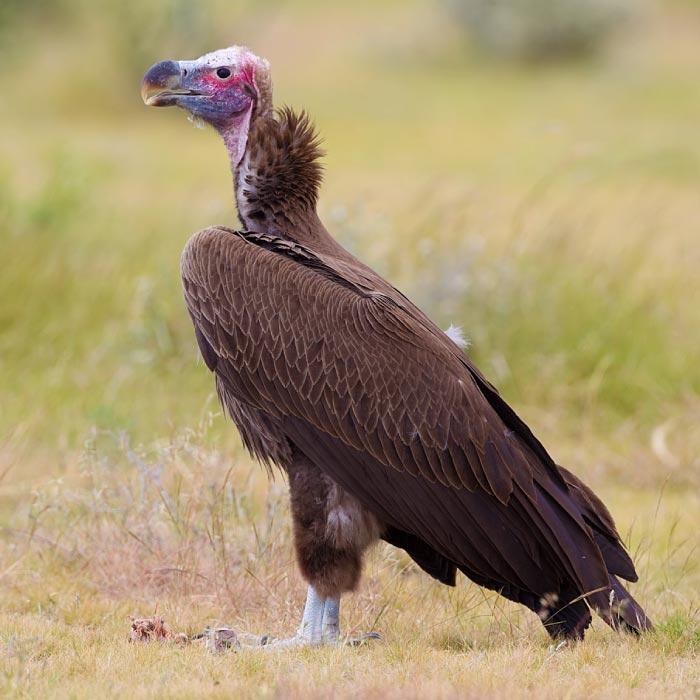

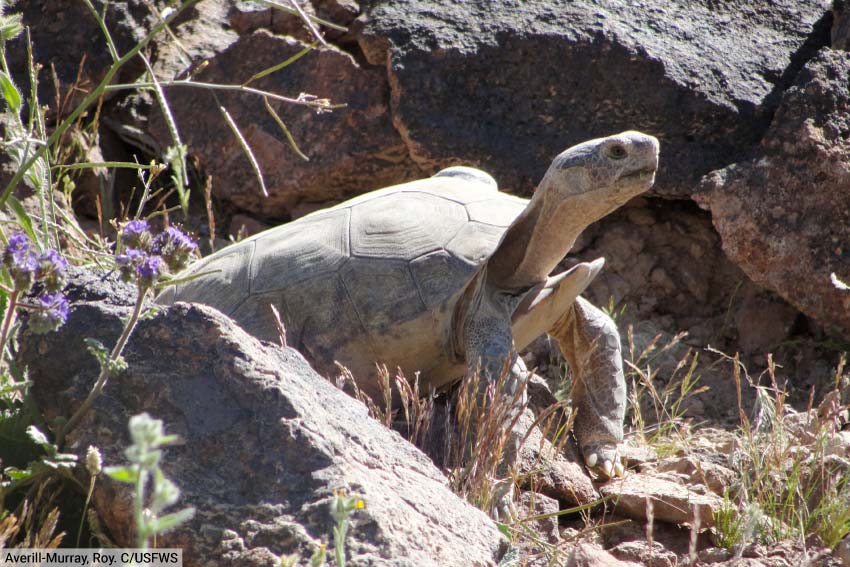





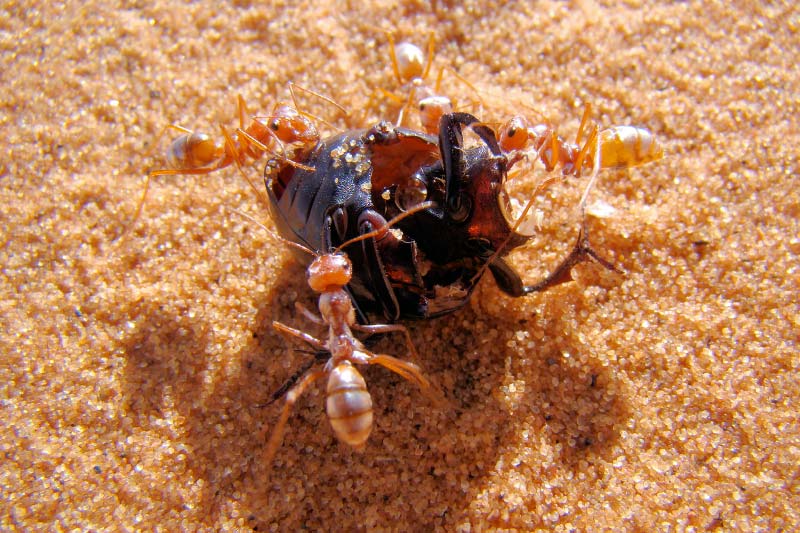
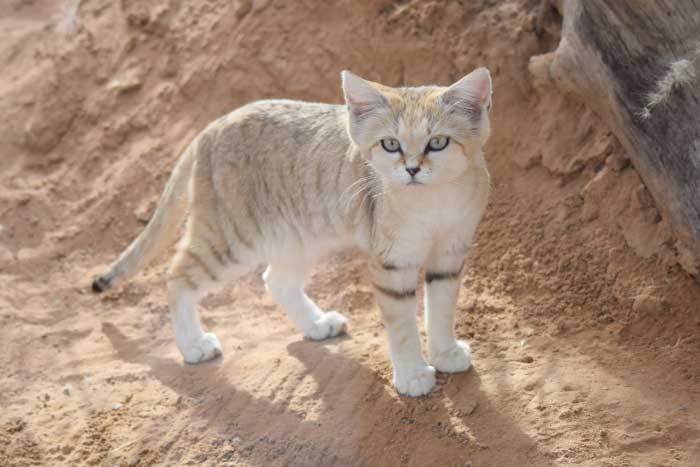
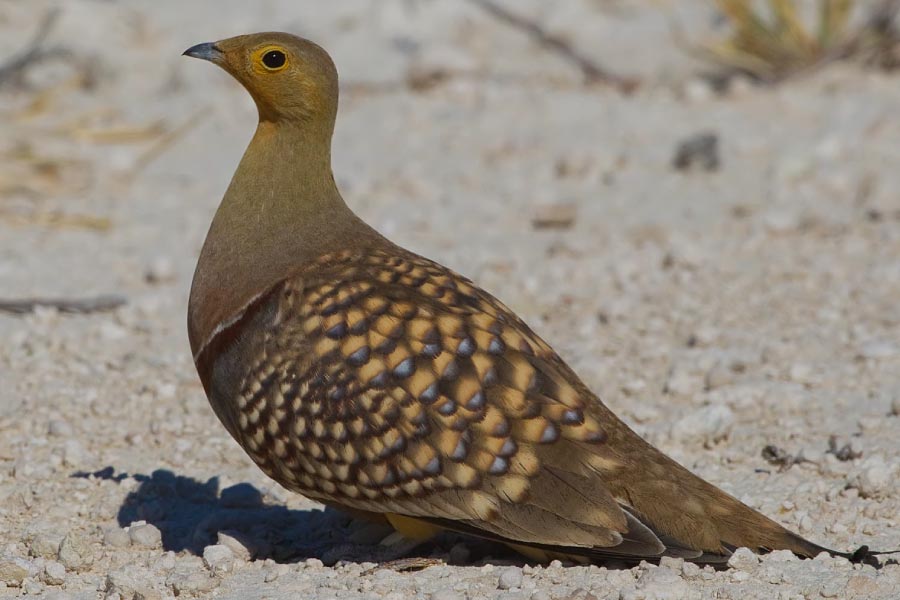
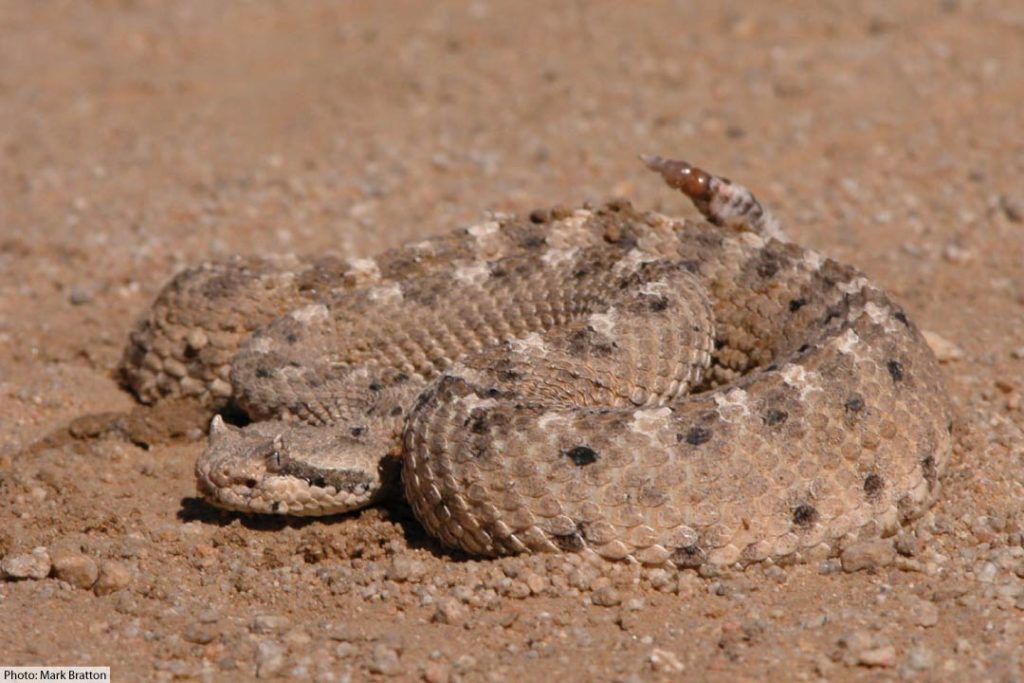
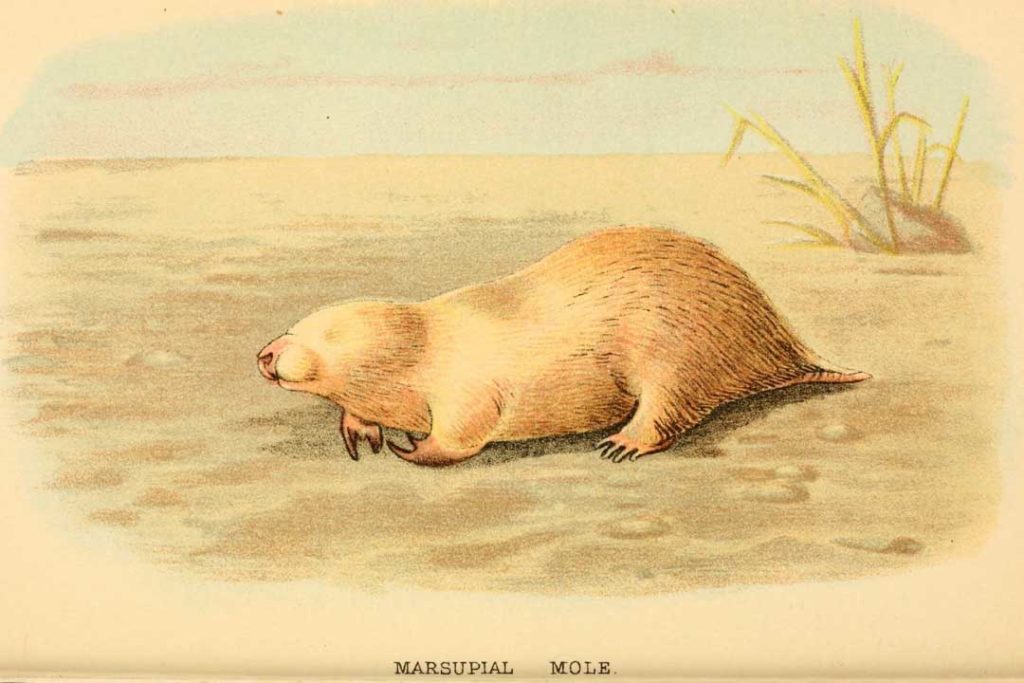

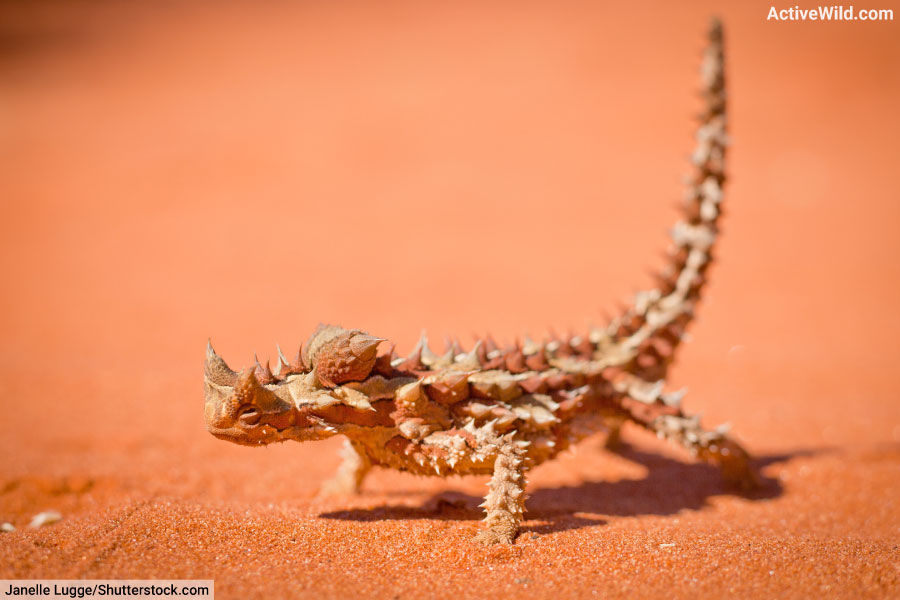



What about the hawks
Good call! Several hawks are found in deserts; in North America these include species such as red-tailed hawk, Harris’s hawk and ferruginous hawk.
Regards,
The Active Wild Team
how do you find the authors name
Hi Noah,
The author of this article was L. Harwood.
Regards,
The Active Wild Team
thank you
I love this ! it really helps me with my studies. if I had to rate it 1 to 5 it would be 5
They forgot to add the Diamondback rattlesnake, a very poisonous snake.
I like the hamster
i love the fennec fox and the sand cat
But what about road runner???
The roadrunner has now been included! 🙂
wow that gave a lot of information
Lots of helpful info. Thanks a lot
You’re welcome! 👍
tarantula?
Helpful for my project!
Anyone else has a project in 2021?
Thx for sending this to my teacher
This is a fabulous kid friendly site, Thanks so much
You’re welcome, thank you for stopping by! 🙂
It’s a great website and I had lots of fun filling out the worksheets